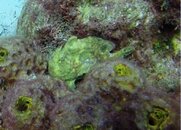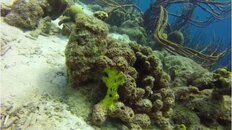I appreciate the OP's enthusiasm and desire to share information, but I don't think it's fair to the marine life. Most "rare" marine life sought by visiting divers on Bonaire is small, camouflaged, and/or shy. The most common examples include seahorses, frogfish, and octopi. Broadcasting their locations across the internet to all divers on Bonaire and/or heading to the island isn't respectful or fair to these fragile critters. They depend on anonymity by design in order to live in their ecosystem.
I didn't always feel this way. In 2009 I was exiting Andrea I after a dive where I discovered a tiny seahorse at 75', when I encountered a friendly female diver with a fancy camera with macro setup entering the water. Thinking it was the friendly thing to do, and assuming she was a responsible diver, I gave her directions to the well-hidden seahorse. The next day I brought my wife to see the seahorse too, as she hadn't seen one yet on this trip. I was dismayed to discover that the seahorse was gone and the delicate coral head it was attached to was broken in several places that would have made logical handholds for an eager photographer with poor buoyancy skills. I feel guilty to this day for giving that little seahorse's position away without vetting the skills and intentions of the recipient of my information.
On our last trip in December and January there were a pair of seahorse's hanging out north of the communications cable at DFB's Hamlet shop (the public shore entry for the Cliff.) The dive shop had a large and very detailed map to these seahorses drawn on the wall of the dive shop. Those poor seahorses were getting mobbed daily by groups of divers with cameras. Even worse were the divers that knew they were nearby, but didn't know exactly where. In their blind enthusiasm to find them these divers were unwittingly disturbing the seahorses and their habitat.
On the same trip there was a well-known green frogfish hanging out near DFB's Yellow Sub shop. I found him the old-fashioned way while diving south from Something Special, so I didn't know at the time that his location was being reported to divers entering at Yellow Sub via the dive shop.
Here's the frogfish on his sponge the day I discovered him:

...And here's the same sponge the next day, now broken and sans frogfish:

The break in the sponge is right where a diver with camera would logically grab to steady themselves for their perfect shot.
There's no need to share these locations just to entertain our fellow divers, especially anonymously via the internet. There's plenty of opportunity to find them on your own or under the supervision of a DM during your visit to Bonaire. For the larger rare creatures like sharks, rays, and dolphins etc. this information is pretty much useless anyway as these creatures are constantly on the move. Just because you saw them in a particular location at a particular time in no indication that they'll still be there even 30 minutes later. I believe the OP's story about repeated shark sightings at Tolo, but this is the exception rather than the rule for large marine life encounters.
Saying that the locations aren't specific doesn't hold water with me either (pun intended.) The tiny creatures require specific directions to find. Reporting "I saw a seahorse somewhere at Bari reef" probably isn't useful or actionable for other divers, so why even share it? In fact I'd argue that you should always expect to find a seahorse
somewhere on most of Bonaire's dive sites. (We discovered 4 seahorses, 2 frogfish, and 2 octopi by ourselves on our last visit.) But sharing even simple hints changes the game. Reporting that "I saw a seahorse at the southern end of Bari at 42 feet" is pretty much a dead-giveaway. Once found they willed be mobbed, their habitat disturbed, and eventually they'll be forced to move on. Why would anyone actively contribute to this? Rare or delicate marine life isn't a commodity to be consumed by tourists at the expense of the critters... or is it?
Edit: I'm also suspicious about the OP's motivation for creating and promoting this "guide". He's announced it here and in the TripAdvisor Bonaire forum, and in both cases used language that leads the reader to believe that he's just another diver who wants to share a cool new website he found online. In his original post he claims "
It's by far the best dive guide of Bonaire you can find, at least the best i've found." Yet he never communicates that he represents the new site and has vested interest in it's success. It's interesting but hardly "the best dive guide", as proven by the majority of posts in this thread that discuss the virtues of other published guides. I also found it ironic that most of the site descriptions in this new web guide are copied (and credited) from STINAPA's web site.
Sorry to stand on my soapbox for so long. This has quietly been bugging me since I first viewed the site after reading the original post. I was hoping it would just quietly go away.


